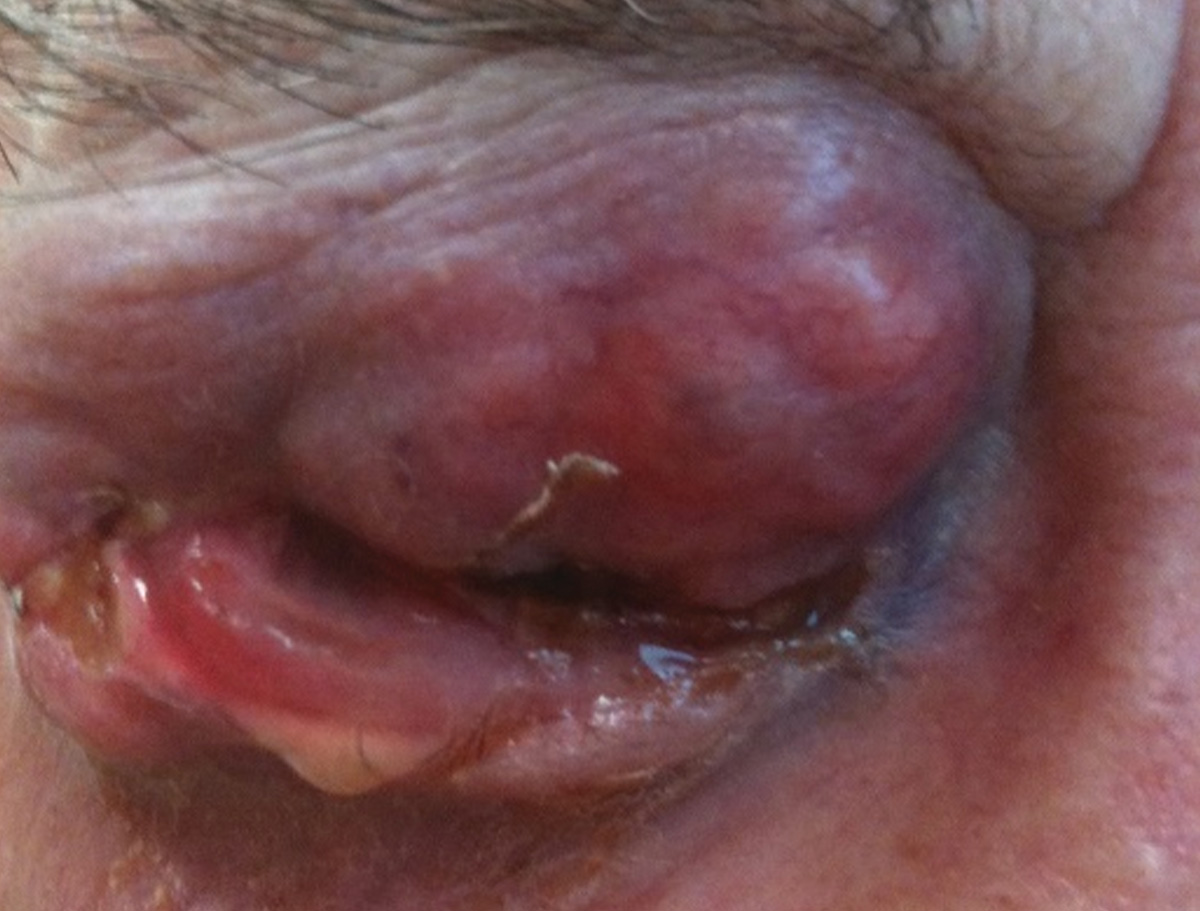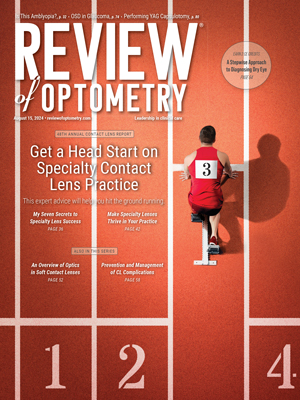 |
|
A recent research effort underscores the high recurrence rate among patients with eyelid sebaceous carcinoma, occurring in approximately four in 10 cases. Photo: Rodney Bendure, OD, Jackie Burress, OD. Click image to enlarge. |
A recent research study, which highlighted the substantial risk of recurrence among patients with eyelid sebaceous carcinoma following surgical resection, identified several independent predictors of recurrence. Using these, they developed and validated a novel nomogram to estimate the probability of repeat incidence.
“The five variables included in this model are clinically relevant and easily available,” the study authors noted in their Investigative Ophthalmology & Visual Science paper. “This nomogram provided more accurate individualized risk estimates for recurrence than conventional TNM staging system, which could guide clinicians in their therapeutic decision-making.”
Researchers conducted a multicenter, retrospective, cohort study to explore the independent predictors of recurrence in eyelid sebaceous carcinoma. They performed chart reviews in 418 consecutive patients with eyelid sebaceous carcinoma; all study participants underwent follow-up after their initial surgery. In this analysis, investigators also created and tested the new scoring system for individualized prediction of recurrent sebaceous carcinoma.
Over a median of 60 months of follow-up, data showed that 167 patients (40%) experienced local recurrence. Study authors reported a median time from diagnosis to recurrence of 14 months and a one-year cumulative recurrence rate of 18%.
The following were identified as independent influencing factors of recurrence: diagnostic delay, orbital involvement, Ki67 and initial surgery of Mohs micrographic surgery with intraoperative frozen section control. “A nomogram integrating these four factors combined with pagetoid spread displayed satisfactory discriminative ability, which compared favorably to TNM staging,” according to the research team.
While discussing their findings in Investigative Ophthalmology & Visual Science, the study authors highlighted the high recurrence rate in eyelid sebaceous carcinoma; approximately four in 10 patients experienced local recurrence.
“Of note, diagnostic delay, orbital involvement at diagnosis, Ki 67 expression, and initial surgical modality of WLE without intraoperative frozen section control were independent risk factors for recurrence,” they noted. “Moreover, we established a novel, robust, and straightforward predictive model for recurrence after primary resection and demonstrated better discriminative ability than the traditional TNM staging system.
“To our knowledge, this is the first exploration to apply a nomogram for recurrence prediction in ocular diseases,” the investigators concluded. “Nevertheless, future studies are needed to fully validate our findings.”
Xu M, Chen Q, Luo Y, et al. Recurrence in Eyelid Sebaceous Carcinoma: A Multicentric Study of 418 Patients. Invest Ophthalmol Vis Sci. August 1, 2024 [Epub ahead of print]. |

